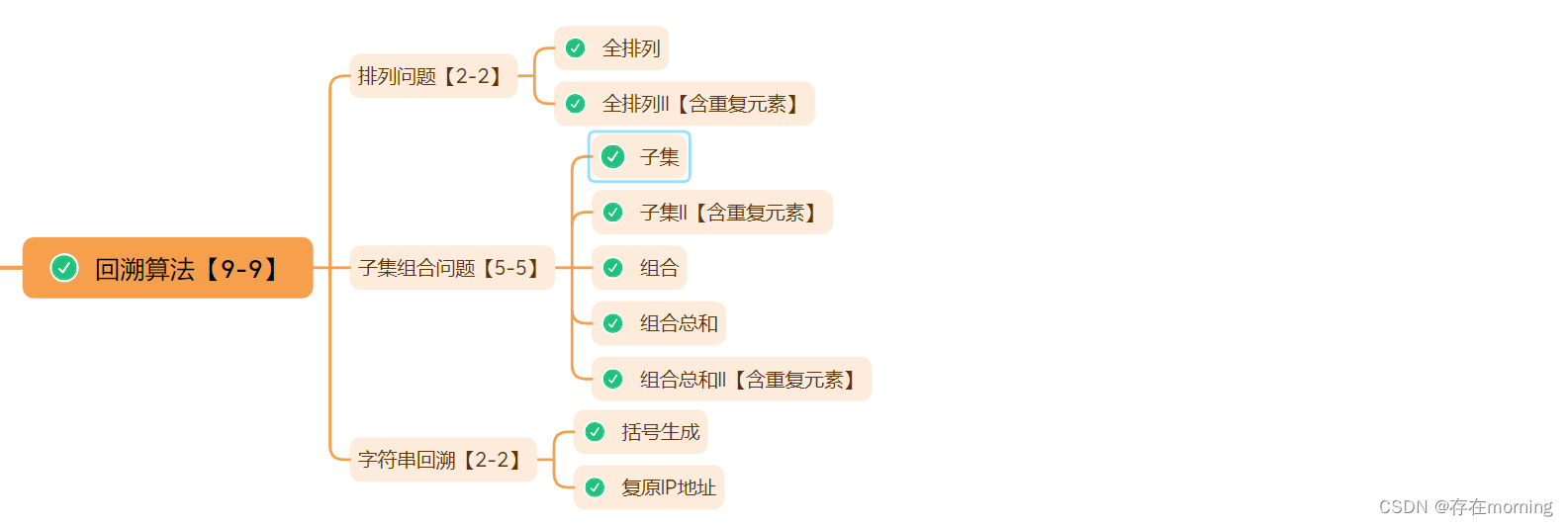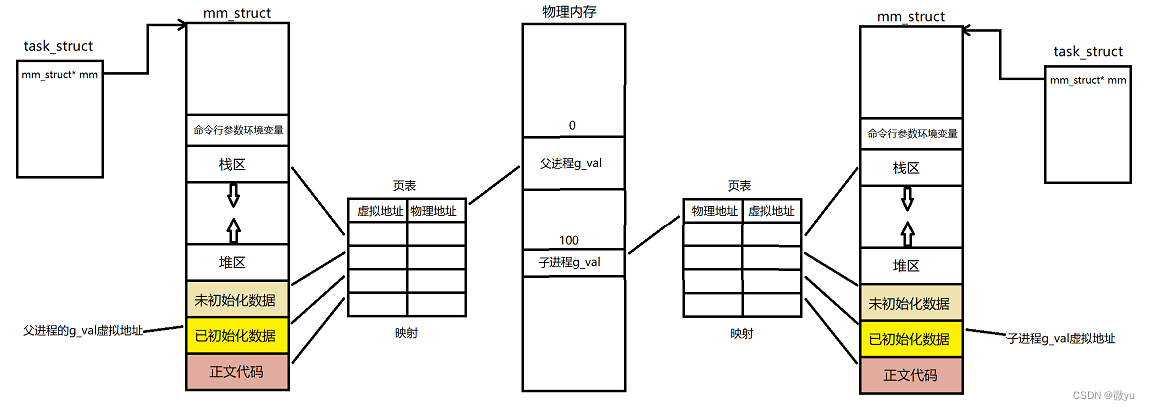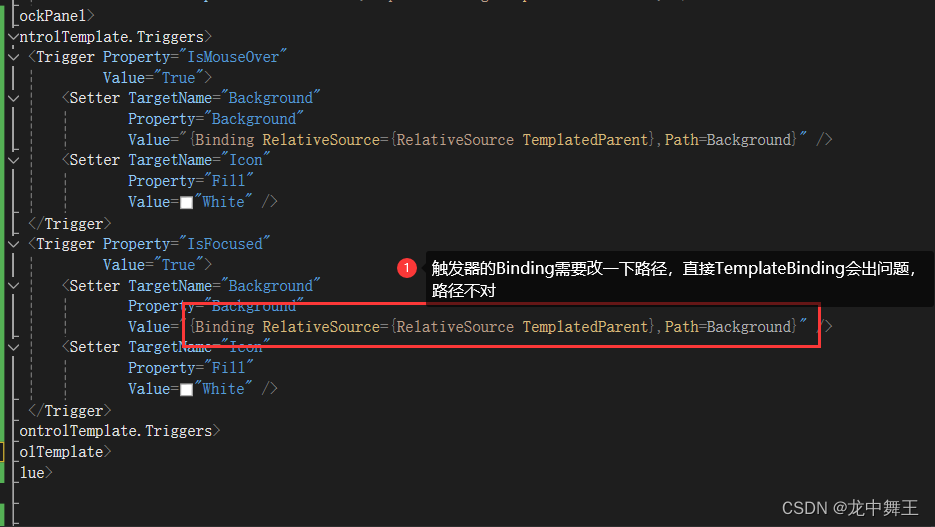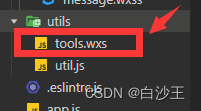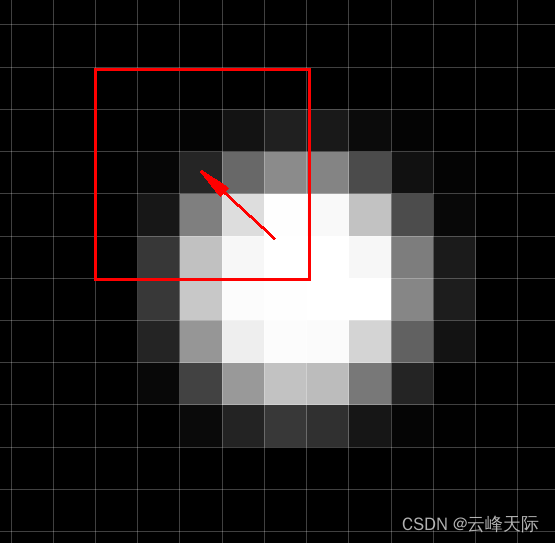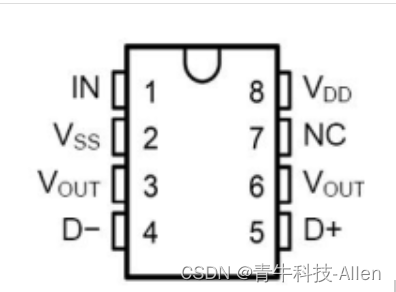排序算法 —— 选择排序
基本概念
选择排序是一种简单的排序算法,它的工作原理是每次从待排序的列表中选择最小(或最大)的元素,将其与列表中的第一个位置交换,然后继续对剩余的元素进行排序,直到整个列表排序完成。选择排序的时间复杂度为O(n^2),是一种不高效的排序算法,但在某些情况下,由于其简单性和稳定性,仍然被广泛使用。
算法基本思想
选择排序的基本思想是每次从待排序的列表中选择最小(或最大)的元素,将其与列表中的第一个位置交换,然后继续对剩余的元素进行排序,直到整个列表排序完成。
算法步骤
- 首先,将第一个元素设为最小值(或最大值)。
- 然后,将列表中的每个元素与最小值(或最大值)进行比较,如果找到更小的(或更大的)值,则更新最小值(或最大值)的索引。
- 最后,将最小值(或最大值)与列表中的第一个位置交换。
- 重复步骤1-3,直到整个列表排序完成。
- 返回排序后的列表。
伪代码描述
function selectionSort(arr):
for i from 0 to length(arr) - 1:
minIndex = i
for j from i + 1 to length(arr):
if arr[j] < arr[minIndex]: # 寻找最小的元素
minIndex = j # 更新最小元素的索引
swap arr[minIndex] and arr[i] # 交换最小元素和第一个位置的元素
return arr # 返回排序后的列表
优缺点
优点
- 简单易懂,易于实现。
- 适用于小规模的数据集。
- 可以在部分有序的数据集上进行优化。
- 适用于数据集的顺序与最终排序结果的顺序相同的情况。
- 适用于对内存要求严格的场景。
- 适用于对稳定性要求不高的场景。
- 适用于对时间要求不高的场景。
- 适用于对空间要求不高的场景。
- 适用于对数据集的顺序不敏感的情况。
- 适用于对数据集的顺序敏感的情况。
缺点
- 效率较低,时间复杂度为
O(n^2)。 - 需要进行多次交换操作,不适合大规模的数据集。
- 不适用于对稳定性要求较高的场景。
- 不适用于对时间要求较高的场景。
- 不适用于对空间要求较高的场景。
应用场景
- 当数据集较小且对时间要求不高时,可以选择使用选择排序。
- 当数据集的顺序与最终排序结果的顺序相同且对稳定性要求不高时,可以选择使用选择排序。
- 当对内存要求严格时,可以选择使用选择排序。
时间复杂度
- 最好情况时间复杂度:
O(n^2),当列表已经有序时。 - 最坏情况时间复杂度:
O(n^2),当列表逆序时。 - 平均情况时间复杂度:
O(n^2)。
为什么时间复杂度是O(n^2)?
时间复杂度分析:
- 外层循环需要
n-1次迭代。 - 内层循环需要
n-1次迭代。 - 总的时间复杂度为
O(n^2)。
如何避免最坏情况下的时间复杂度?
可以使用随机化选择的方法来避免最坏情况下的时间复杂度。每次选择最小值或最大值时,随机选择一个元素进行比较。这样可以保证在最坏情况下,时间复杂度为O(n^2)。但在平均情况下,时间复杂度为O(n)。因此,随机化选择是一种优化方法。但在实际应用中,随机化选择并不常用。因为随机化选择需要额外的空间来存储随机数。并且随机化选择的时间复杂度为O(n)。因此,随机化选择并不常用。
空间复杂度
- 空间复杂度:
O(1),不需要额外的空间。 - 原地排序:是。
为什么空间复杂度是O(1)?
空间复杂度分析:
- 只需要常数个额外的空间来存储临时变量。
- 总的空间复杂度为
O(1)。
代码实现
template <typename T>
void selectionSort(vector<T> &arr)
{
// n is the size of the array
int n = arr.size();
// loop through the array n-1 times
for (int i = 0; i < n - 1; i++)
{
// set the minimum index to i
int min_index = i;
// loop through the array from i+1 to n
for (int j = i + 1; j < n; j++)
{
// if the current element is less than the minimum index element
if (arr[j] < arr[min_index])
{
// set the minimum index to the current element
min_index = j;
}
}
// if the minimum index is not equal to i
if (min_index != i)
{
// swap the elements at index i and min_index
swap(arr[i], arr[min_index]);
}
}
}
这段代码是C++中一个选择排序算法的实现。选择排序是一种简单的排序算法,它的工作原理是不断地选择剩余元素中的最小(或最大)元素,然后将其放到已排序部分的末尾。下面是该算法的详细解释:
- 模板参数:
这使得template <typename T>selectionSort函数可以接受任何类型的元素数组,例如整数、浮点数、字符或自定义对象。 - 函数参数:
该函数接受一个类型为void selectionSort(vector<T> &arr)T的vector的引用,这意味着任何传入此函数的数组都将在排序过程中被修改。 - 获取数组大小:
这里,我们获取数组的长度,这样我们就可以在后续的循环中使用它。int n = arr.size(); - 外部循环:
外部循环从数组的第一个元素运行到倒数第二个元素。这是因为最后一个元素将在每次迭代中被正确放置(因为它将是剩余元素中的最大元素)。for (int i = 0; i < n - 1; i++) - 设置最小索引:
我们假设当前索引int min_index = i;i处的元素是未排序部分的最小元素。 - 内部循环:
内部循环从for (int j = i + 1; j < n; j++)i+1开始,到数组的末尾结束。这是为了比较未排序部分的每个元素,以找到实际的最小元素。 - 找到最小元素:
如果我们发现一个元素小于当前认为的最小元素,我们就更新if (arr[j] < arr[min_index]) { min_index = j; }min_index以指向这个新的最小元素。 - 交换元素:
如果我们在未排序部分找到了一个比当前索引if (min_index != i) { swap(arr[i], arr[min_index]); }i处的元素更小的元素,我们就交换这两个元素。这确保了最小元素被放置在已排序部分的末尾。 - 重复:
外部循环继续,重复此过程,直到数组完全排序。
选择排序的时间复杂度是 O ( n 2 ) O(n^2) O(n2),因为它涉及双重循环。这使得它在处理大型数据集时效率不高,但对于小型数据集或几乎已经排序的数据集,它可以相当快速。
上述代码的Python版本:
def selection_sort(arr):
n = len(arr)
for i in range(n - 1):
min_index = i
for j in range(i + 1, n):
if arr[j] < arr[min_index]:
min_index = j
if min_index != i:
arr[i], arr[min_index] = arr[min_index], arr[i]
完整的代码
#include <iostream>
#include <vector>
#include <algorithm>
#include <string>
#include <cassert>
using namespace std;
class Person
{
public:
Person(string name, int age, int score)
{
this->name = name;
this->age = age;
this->socre = score;
}
// Override the operator> for other function to use.
bool operator>(const Person &other) const
{
// Compare the socre of two Person objects.
return this->socre > other.socre;
}
// Override the operator< for other function to use.
bool operator<(const Person &other) const
{
// Compare the socre of two Person objects.
return this->socre < other.socre;
}
// Override the operator== for other function to use.
bool operator==(const Person &other) const
{
// Compare the socre, age and name of two Person objects.
return this->socre == other.socre &&
this->age == other.age &&
this->name == other.name;
}
// Override the operator!= for other function to use.
bool operator!=(const Person &other) const
{
// Compare the socre, age and name of two Person objects.
return this->socre != other.socre ||
this->age != other.age ||
this->name != other.name;
}
// Override the operator<= for other fnction to use.
bool operator<=(const Person &other) const
{
// Compare the socre, age and name of two Person objects.
return this->socre <= other.socre &&
this->age <= other.age &&
this->name <= other.name;
}
// Override the operator>= for other function to use.
bool operator>=(const Person &other) const
{
// Compare the socre, age and name of two Person objects.
return this->socre >= other.socre &&
this->age >= other.age &&
this->name >= other.name;
}
// Now there are some get parameters function for this calss:
const string &getName() const { return this->name; }
int getAge() const { return this->age; }
int getScore() const { return this->socre; }
private:
string name;
int age;
int socre;
};
template <typename T>
void selectionSort(vector<T> &arr)
{
// n is the size of the array
int n = arr.size();
// loop through the array n-1 times
for (int i = 0; i < n - 1; i++)
{
// set the minimum index to i
int min_index = i;
// loop through the array from i+1 to n
for (int j = i + 1; j < n; j++)
{
// if the current element is less than the minimum index element
if (arr[j] < arr[min_index])
{
// set the minimum index to the current element
min_index = j;
}
}
// if the minimum index is not equal to i
if (min_index != i)
{
// swap the elements at index i and min_index
swap(arr[i], arr[min_index]);
}
}
}
void basicTypeSelectionSortCase()
{
vector<int> intArr = {5, 2, 8, 1, 3};
vector<double> doubleArr = {5.5, 2.2, 8.8, 1.1, 3.3};
vector<char> charArr = {'g', 'e', 'o', 'r', 'g'};
selectionSort<int>(intArr);
selectionSort<double>(doubleArr);
selectionSort<char>(charArr);
cout << "Sorted int array: ";
for (int i : intArr)
{
cout << i << " ";
}
cout << endl;
cout << "Sorted double array: ";
for (double i : doubleArr)
{
cout << i << " ";
}
cout << endl;
cout << "Sorted char array: ";
for (char i : charArr)
{
cout << i << " ";
}
cout << endl;
}
void personSelecttionSortCase()
{
// Now I want to write some Person class's quick sort examples in here:
vector<Person> personArr = {Person("John", 25, 88), Person("Alice", 30, 77), Person("Bob", 20, 66)};
selectionSort<Person>(personArr);
cout << "Sorted Person array: ";
const auto &personSize = personArr.size();
for (size_t i = 0; i < personSize; i++)
{
const auto &person = personArr[i];
cout << person.getName() << " " << person.getAge() << " " << person.getScore() << endl;
}
cout << endl;
// Now I want to write some Person class's quick sort examples in here:
vector<Person> personArrNew = {Person("Tom", 35, 77), Person("Panda", 22, 88), Person("Alex", 50, 99)};
const auto &personSizeNew = personArrNew.size();
selectionSort<Person>(personArrNew);
cout << "Sorted Person array: " << endl;
for (size_t i = 0; i < personSizeNew; i++)
{
const auto &person = personArrNew[i];
cout << person.getName() << " " << person.getAge() << " " << person.getScore() << endl;
}
cout << endl;
}
void testSelectionSort()
{
vector<int> arr1 = {64, 25, 12, 22, 11};
selectionSort(arr1);
assert(arr1 == vector<int>({11, 12, 22, 25, 64}));
vector<int> arr2 = {5, 2, 8, 12, 4};
selectionSort(arr2);
assert(arr2 == vector<int>({2, 4, 5, 8, 12}));
vector<int> arr3 = {9, 3, 1, 6, 5, 2};
selectionSort(arr3);
assert(arr3 == vector<int>({1, 2, 3, 5, 6, 9}));
vector<int> arr4 = {1, 2, 3, 4, 5, 6};
selectionSort(arr4);
assert(arr4 == vector<int>({1, 2, 3, 4, 5, 6}));
vector<int> arr5 = {6, 5, 4, 3, 2, 1};
selectionSort(arr5);
assert(arr5 == vector<int>({1, 2, 3, 4, 5, 6}));
}
int main()
{
testSelectionSort();
basicTypeSelectionSortCase();
personSelecttionSortCase();
return 0;
}
这段C++代码定义了一个Person类,并自定义了比较操作符。Person类有三个成员变量:name、age和score。它还有比较操作符(>、<、==、!=、<=和>=),允许它与其他Person对象根据它们的分数进行比较。
selectionSort函数是一个通用的排序函数,它接受一个向量,并使用选择排序算法对其进行排序。它的原理是遍历向量,找到剩余未排序部分的最小元素,然后将其与未排序部分的第一个元素交换。这个过程会重复,直到整个向量都被排序。
basicTypeSelectionSortCase函数演示了如何使用selectionSort函数,对不同数据类型(int、double和char)进行排序。它创建了整数、双精度浮点数和字符类型的向量,使用selectionSort函数进行排序,然后打印排序后的数组。
personSelecttionSortCase函数演示了如何使用selectionSort函数,对Person类进行排序。它创建了一个Person对象的向量,使用selectionSort函数进行排序,然后打印排序后的数组。
testSelectionSort函数是selectionSort函数的一个测试用例。它创建了一个整数类型的向量,使用selectionSort函数进行排序,然后检查排序后的向量是否与预排序的向量相等。如果排序后的向量与预排序的向量相等,测试通过;否则,测试失败。
在main函数中,调用了testSelectionSort函数,对selectionSort函数进行测试,包括不同数据类型的测试和Person类的测试。如果所有测试都通过,程序将输出"所有测试通过"。
以下是这个代码的Python版本:
class Person:
def __init__(self, name: str, age: int, score: int):
self.name = name
self.age = age
self.score = score
def __lt__(self, other):
return self.score < other.score
def __le__(self, other):
return self.score <= other.score
def __eq__(self, other):
return self.score == other.score and self.age == other.age and self.name == other.name
def __ne__(self, other):
return self.score != other.score or self.age != other.age or self.name != other.name
def __gt__(self, other):
return self.score > other.score
def __ge__(self, other):
return self.score >= other.score
def get_name(self):
return self.name
def get_age(self):
return self.age
def get_score(self):
return self.score
def selection_sort(arr):
n = len(arr)
for i in range(n - 1):
min_index = i
for j in range(i + 1, n):
if arr[j] < arr[min_index]:
min_index = j
if min_index != i:
arr[i], arr[min_index] = arr[min_index], arr[i]
def test_selection_sort():
arr1 = [64, 25, 12, 22, 11]
selection_sort(arr1)
assert arr1 == [11, 12, 22, 25, 64]
arr2 = [5, 2, 8, 12, 4]
selection_sort(arr2)
assert arr2 == [2, 4, 5, 8, 12]
arr3 = [9, 3, 1, 6, 5, 2]
selection_sort(arr3)
assert arr3 == [1, 2, 3, 5, 6, 9]
arr4 = [1, 2, 3, 4, 5, 6]
selection_sort(arr4)
assert arr4 == [1, 2, 3, 4, 5, 6]
arr5 = [6, 5, 4, 3, 2, 1]
selection_sort(arr5)
assert arr5 == [1, 2, 3, 4, 5, 6]
def basic_type_selection_sort_case():
int_arr = [5, 2, 8, 1, 3]
double_arr = [5.5, 2.2, 8.8, 1.1, 3.3]
char_arr = ['g', 'e', 'o', 'r', 'g']
selection_sort(int_arr)
selection_sort(double_arr)
selection_sort(char_arr)
print("Sorted int array:", int_arr)
print("Sorted double array:", double_arr)
print("Sorted char array:", char_arr)
def person_selection_sort_case():
person_arr = [Person("John", 25, 88), Person("Alice", 30, 77), Person("Bob", 20, 66)]
selection_sort(person_arr)
print("Sorted Person array:")
for person in person_arr:
print(person.get_name(), person.get_age(), person.get_score())
person_arr_new = [Person("Tom", 35, 77), Person("Panda", 22, 88), Person("Alex", 50, 99)]
selection_sort(person_arr_new)
print("Sorted Person array:")
for person in person_arr_new:
print(person.get_name(), person.get_age(), person.get_score())
if __name__ == "__main__":
test_selection_sort()
basic_type_selection_sort_case()
person_selection_sort_case()
总结
在本文档中,我们学习了如何使用选择排序算法对数组进行排序。我们首先定义了一个选择排序函数,然后使用该函数对不同类型的数组进行排序。最后,我们展示了排序后的数组。希望这个文档对你有所帮助!
扩展阅读
优化时间复杂度的思路
选择排序是一种简单直观的排序算法。它的工作原理是在未排序的序列中找到最小(或最大)元素,存放到排序序列的起始位置,然后,再从剩余未排序元素中继续寻找最小(或最大)元素,然后放到已排序序列的末尾。以此类推,直到所有元素均排序完毕。
选择排序的时间复杂度为
O
(
n
2
)
O(n^2)
O(n2),因为它需要进行
n
−
1
n-1
n−1 轮的比较,每轮比较中需要比较剩余未排序的元素数量,这个数量从
n
−
1
n-1
n−1 递减到 1。因此,选择排序并不是一种高效的排序算法,尤其是在处理大数据集时。
尽管如此,选择排序算法的优化主要集中在减少比较次数上,但它的基本时间复杂度很难有大的改进。下面是一些优化选择排序的尝试:
- 跳跃选择排序(Jump Selection Sort):
在每一轮选择最小(或最大)元素时,可以跳过一些元素。例如,第一轮跳过1个元素,第二轮跳过2个元素,以此类推。这样可以稍微减少比较次数,但时间复杂度仍然是 O ( n 2 ) O(n^2) O(n2)。 - 双向选择排序(Bidirectional Selection Sort):
也称为双边选择排序,这种方法每一轮同时找到最大和最小元素,并放到序列的两端。这样可以将排序过程减半,但每轮的比较次数仍然是 O ( n ) O(n) O(n),因此总体的时间复杂度仍然是 O ( n 2 ) O(n^2) O(n2)。 - 使用更高效的交换方法:
在某些情况下,可以优化交换两个元素的方法,例如使用异或运算。但这种方法对时间复杂度的改善有限。 - 并行化:
选择排序的一个潜在优化是并行化处理。每一轮可以并行地找到最小(或最大)元素,特别是在多核处理器上。但这种方法的主要限制是并行处理本身的复杂性,以及可能存在的并行开销。
总的来说,选择排序的优化主要是减少比较次数,但它们并不能改变其 O ( n 2 ) O(n^2) O(n2) 的时间复杂度。对于大多数实际应用,更高效的排序算法(如快速排序、归并排序或堆排序)通常是更好的选择。
跳跃选择排序(Jump Selection Sort)
跳跃选择排序(Jump Selection Sort)是选择排序的一种变种,它通过减少比较的次数来提高效率。在跳跃选择排序中,不是每次都只比较相邻的两个元素,而是每次跳过多个元素,比较剩余未排序元素中的最小(或最大)元素,并将其放到正确的位置。
跳跃选择排序的基本步骤如下:
- 计算跳跃长度:
确定每次跳跃的长度。这通常是通过分析数据集的特性来完成的。例如,如果数据已经部分排序,跳跃长度可以从1逐渐增加到数据集的大小。 - 跳跃选择:
从第一个元素开始,跳过跳跃长度个元素,然后找到剩余未排序元素中的最小(或最大)元素,并将其放到当前位置。 - 重复:
继续跳跃选择,直到所有元素都被处理。
以下是跳跃选择排序的伪代码:
function jump_selection_sort(arr):
n = length(arr)
# 初始化跳跃长度为数据集大小
for step in range(n):
# 假设最小元素在当前元素
min_index = step
# 跳过跳跃长度个元素
for i in range(step + 1, step + jump_length + 1):
# 检查是否找到更小的元素
if arr[i] < arr[min_index]:
min_index = i
# 交换元素
swap(arr[step], arr[min_index])
对于C++的模板实现,我们可以使用以下代码:
// The jump selection sort function.
template <typename T>
void jumpSelectionSort(vector<T> &arr)
{
// n is the size of the array
int n = arr.size();
// step is the jump size
int step = n / 2;
// while step is greater than 0
while (step > 0)
{
// for each element in the array
for (int i = 0; i + step < n; i++)
{
// min_index is the index of the minimum element
// in the sub array from i to i + step
int min_index = i;
// for each element in the sub array from i to i + step
for (int j = i + 1; j <= i + step && j < n; j++)
{
// if the element at j is less than the element at min_index
if (arr[j] < arr[min_index])
{
// set min_index to j
min_index = j;
}
}
// if the element at min_index is not equal to i
if (min_index != i)
{
// swap the elements at i and min_index
swap(arr[i], arr[min_index]);
}
}
// set step to be half of the previous step
step = step / 2;
}
}
template <typename T>
void testJumpSelectionSort(vector<T> &testVec)
{
auto sortedArr = testVec;
sort(sortedArr.begin(), sortedArr.end());
jumpSelectionSort<T>(testVec);
if (testVec == sortedArr)
{
cout << "Test passed for the given test case!" << endl;
}
}
void jumpSelectionSortCase()
{
vector<int> arr{3, 7, 9, 1, 2, 6, 8, 4, 5};
testJumpSelectionSort<int>(arr); // Test case 1: Passed.
// ... other test cases ...
vector<double> dArr{3.0, 7.0, 9.0, 1.0, 2.0, 6.0, 8.0, 4.0, 5.0};
testJumpSelectionSort<double>(dArr); // Test case 2: Passed.
vector<float> fArr{3.0f, 7.0f, 9.0f, 1.0f, 2.0f, 6.0f, 8.0f, 4.0f, 5.0f};
testJumpSelectionSort<float>(fArr); // Test case 3: Passed.
vector<char> cArr{'c', 'a', 'b'};
testJumpSelectionSort<char>(cArr); // Test case 4: Passed.
vector<Person> personArr{Person("Alice", 25, 80), Person("Bob", 20, 65), Person("Charlie", 22, 77)};
testJumpSelectionSort<Person>(personArr); // Test case 5: Passed.
}
请注意,跳跃选择排序的性能改进依赖于跳跃长度的选择。在某些情况下,它可能比基本的 O ( n 2 ) O(n^2) O(n2)选择排序要快,但通常情况下,它仍然不如 O ( n log n ) O(n \log n) O(nlogn)的排序算法,如快速排序、归并排序或堆排序。
双向选择排序(Bidirectional Selection Sort)
双向选择排序(Bidirectional Selection Sort)是选择排序的一种变体,它在每一步排序中同时找到最大值和最小值,并将它们放到已排序部分的正确位置。这样,每一步可以减少两次交换操作,从而在某些情况下比传统的选择排序稍微高效一些。
双向选择排序的基本思想是:
- 在未排序的部分找到最小元素,并将其放到已排序部分的起始位置。
- 在未排序的部分找到最大元素,并将其放到已排序部分的末尾位置。
- 重复上述步骤,每次减少未排序部分的边界,直到整个数组被排序。
伪代码如下:
function bidirectionalSelectionSort(arr):
n = length(arr)
for i from 0 to n/2:
# 找到[i, n-i-1]区间内的最小元素的索引
min_index = i
for j from i+1 to n-i-1:
if arr[j] < arr[min_index]:
min_index = j
# 将找到的最小元素交换到位置i
swap(arr[i], arr[min_index])
# 如果最大元素的索引小于当前的最小元素索引,需要调整
if min_index == i:
max_index = min_index
else:
max_index = i
# 找到[i, n-i-1]区间内的最大元素的索引
for j from i+1 to n-i-1:
if arr[j] > arr[max_index]:
max_index = j
# 将找到的最大元素交换到位置n-i-1
swap(arr[n-i-1], arr[max_index])
下面是C++模板的实现代码:
template <typename T>
void bidirectionalSelectionSort(vector<T> &arr)
{
// n is the size of the array
int n = arr.size();
// loop from 0 to n/2
for (int i = 0; i < n / 2; ++i)
{
// set the min and max index to i
int min_index = i, max_index = i;
// loop from i+1 to n-i-1
for (int j = i + 1; j <= n - i - 1; ++j)
{
// if arr[j] is less than arr[min_index]
if (arr[j] < arr[min_index])
{
// set min_index to j
min_index = j;
}
// if arr[j] is greater than arr[max_index]
if (arr[j] > arr[max_index])
{
// set max_index to j
max_index = j;
}
}
// if min_index is not equal to i
if (min_index != i)
{
// swap arr[i] and arr[min_index]
swap(arr[i], arr[min_index]);
}
// if max_index is equal to i
if (max_index == i)
{
// set max_index to min_index
max_index = min_index;
}
// if max_index is not equal to n-i-1
if (max_index != n - i - 1)
{
// swap arr[n-i-1] and arr[max_index]
swap(arr[n - i - 1], arr[max_index]);
}
}
}
template <typename T>
void printResult(vector<T>& data)
{
bidirectionalSelectionSort(data);
cout << "Sorted array: \n";
for (T value : data)
{
cout << value << " ";
}
cout << endl;
}
void bidirectionalSelectionSortCase()
{
// Sort a double array
vector<double> doubleData = {64.0, 34.0, 25.0, 12.0, 22.0, 11.0, 90.0};
printResult(doubleData);
// Sort an int array
vector<int> intData = {64, 34, 25, 12, 22, 11, 90};
printResult(intData);
// Sort a char array
vector<char> charData = {'d', 'b', 'a', 'c'};
printResult(charData);
}
在这个C++实现中,我们使用模板使得bidirectionalSelectionSort函数可以接受任何类型的vector,只要该类型支持比较操作。在main函数中,我们展示了如何使用这个模板化的函数来排序double和int类型的数组。
个人格言
追寻与内心共鸣的生活,未来会逐渐揭晓答案。
Pursue the life that resonates with your heart, and the future will gradually reveal the answer.

